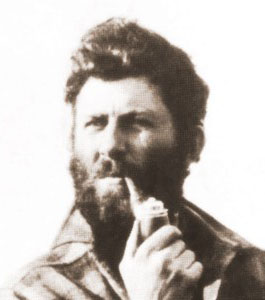Laurence McKinley Gould
American Polar Society Luminary
 Laurence McKinley Gould (1896 – 1995), geologist, explorer, and mentor of polar scientists, first sailed to the high latitudes in 1926 with the pioneering meteorologist William Hobbs. Hobbs and his team had hitched a ride to Greenland with the Putnam Arctic Expedition. Gould was such a sparkling fellow that the expedition leader, New York publisher George Palmer Putnam, engaged him as chief scientist of a follow-up outing, the Putnam Baffin Island Expedition of 1927, and recommended Larry to one of his authors, Richard E. Byrd.
Laurence McKinley Gould (1896 – 1995), geologist, explorer, and mentor of polar scientists, first sailed to the high latitudes in 1926 with the pioneering meteorologist William Hobbs. Hobbs and his team had hitched a ride to Greenland with the Putnam Arctic Expedition. Gould was such a sparkling fellow that the expedition leader, New York publisher George Palmer Putnam, engaged him as chief scientist of a follow-up outing, the Putnam Baffin Island Expedition of 1927, and recommended Larry to one of his authors, Richard E. Byrd.
Gould went south as chief scientist and second-in-command of the first Byrd Antarctic Expedition (1928-30). As field leader of a 1,500-mile sledge journey to the foot of the Transantarctic Mountains, Larry collected rocks that gave significant evidence of the geological history of the chain. He accepted a position at Carleton College in Minnesota in 1932 and rose from professor to president, meanwhile leading the U.S. delegation to the International Council of Scientific Unions, the managing body of the International Geophysical Year. Gould became a staunch advocate of the Antarctic Treaty, and his eloquent testimony before the Senate Foreign Relations Committee was instrumental in securing its ratification.
Retiring from Carleton in 1962, Gould launched a second career at the University of Arizona. As teacher, visionary, chairman of the Committee on Polar Research of the National Academy of Sciences, and president of the American Association for the Advancement of Science, he inspired generations of students to undertake careers in polar science.
In 1997, the National Science Foundation named a polar research vessel in his honor.
